 Jeffrey Wells
Jeffrey Wells
John Q. Citizen
There are at least two color-designated West Hollywood voting districts — the green and the pink. I’m a green, and after I identified as such a volunteer led me right into the Weho community center (West Hollywood Park, 647 San Vicente Blvd.) with almost no waiting. I was done voting within five minutes. But poor Laura Dern was from the pink district, and so she was still waiting when I left. I’m sorry. It’s a warm day, an all-blue sky, clean air, peaceful. The last thing you want to do is work inside. Which of course is what I’m doing.

WeHo Community Venterm San Vicente Blvd.

Laura Dern (blondie, shades) ahead of me in the pink line. Two or three minutes after I snapped this a volunteer led me into the green line.

“We Used To Eat Punks Like You”
When it came to movie stars with testy, pugnacious reputations, Hollywood would cast them in redemption dramas. The guys behind any number of Jimmy Cagney films of the ’30s and’40s pretty much invented this. Put a rogue-ishly likable, anti-social lout into some arduous, do-or-die situation and allow him to redeem himself in the third act. This formula was used in three or four Frank Sinatra films of the ’50s (From Here To Eternity, Young at Heart, The Man With The Golden Arm, The Joker Is Wild, Pal Joey) and finally, for the last time, in The Devil at 4 O’Clock (’61) — Hollywood’s first outdoor ensemble disaster film**. The producers sunk a lot of coin into what were regarded back then as knockout special effects. The best was an exploding volcano — a practical effect that was fortified with heavy fireball explosives and pretty much built from scratch in a farm-country location near Fallbrook, right near Camp Pendleton. Does this character-driven, Mervyn LeRoy-directed adventure cut the mustard by today’s standards? Not from a technical standpoint, no, and a lot of it feels hokey. But from a general quality perspective it’s a lot better than Irwin Allen‘s When Time Ran Out (’80), which used more or less the same story.
** Hollywood’s first “indoor” ensemble disaster film was William Wellman‘s The High and the Mighty (’54).
Bright and Early
For the next 90 minutes, Hollywood Elsewhere will be (a) fulfilling a certain Constitutional duty and (b) picking up a few things at Pavilions (deli-style chicken salad, pita bread, low-calorie popsicles, apples, green O’Doul’s for tonight’s celebration).


“One of The True Nefarious Characters in American History”
Presuming that Hillary Clinton squeaks through to a win tomorrow night (the announcement will come sometime around midnight eastern, possibly a little later), there’s a good chance that Donald Trump will not only refuse to concede but will call on his scumbag followers to grab their muskets and wage open revolt against the establishment, etc. I would honestly be surprised if he plays it classy. An 11.7 article by HuffPost‘s Julia Craven addresses this very concern.

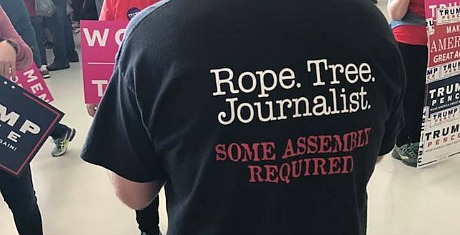
That Sickly Look on Dean Martin’s Face
Never forget that while many films of the 1970s were indeed rich and rewarding, there was also a lot of schlock to contend with. (And I don’t mean John Landis‘s Schlock, which is a witty little exploitation comedy. And I don’t mean Mike Nichols‘ The Day of the Dolphin, which I have a certain weakness for.) The Airport franchise was godawful from the get-go, and everyone (filmmakers, audiences) knew this. And it didn’t matter. If someone had offered me a decent sum to re-watch and review, I would have seriously considered turning them down. Really.
Worst ’70s films: Aloha Bobby and Rose, Andy Warhol’s Dracula, Quintet, A Perfect Couple, Logan’s Run, The Black Bird, The Only Game in Town, Death Race 2000, The Fury, The Swarm, Last Remake of Beau Geste, The Love Machine, Moment by Moment, Sargent Pepper’s Lonely Hearts Club Band, The Thing With Two Heads, The Wiz, Xanadu, Earthquake, Dirty Mary, Crazy Larry, Myra Breckinridge, An American Hippie in Israel, Exorcist II: The Heretic, I Spit on Your Grave, Caligula. Note: The Airport franchise Bluray (Airport, Airport ’75, Airport ’77, Airport ’79: The Concorde) is selling on Amazon for only $15.
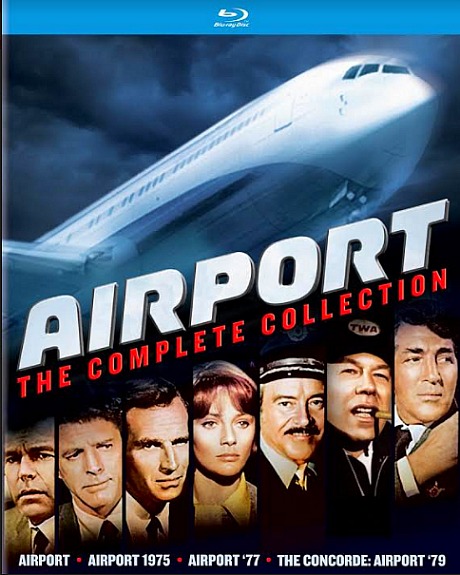
Only Five Theatres Will Screen “Whole Shebang” Version of Billy Lynn
Variety‘s Ramin Setoodeh and Brent Lang are reporting that Ang Lee, dirctor of Billy Lynn’s Long Halftime Walk, and Sony Pictures honcho Tom Rothman “clashed regularly during filming and in post-production, according to insiders, on the roller-coaster production with a $40 million pricetag,” primarily over “Lee’s decision to shoot the Iraq war picture in 120 frames-per-second, a new record for a big-screen feature.”
The bottom line is that Rothman didn’t think the bulk of the HFR photography was transporting enough to justify the cost of enabling dozens of theatres to project Billy Lynn at 120 fps, and so “only five locations around the world will be showing Billy Lynn’s Long Halftime Walk in the way Lee wants it to be seen: 120 frames-per-second, 4K resolution and in 3D.”
Five theatres worldwide are showing the full whambam? That’s all?
Here’s the real eye-opener: “Market research indicated that audiences gave higher scores to Billy Lynn at the regular 24 frames-per-second, which is how the movie will play at 800 or so theaters when it expands on 11.18 after opening this Friday on 11.11. Setoodeh and Lang report that “other high-frame-rate screens could be added later on.”
Variety‘s conclusion: “When it was greenlit, the hope was that Billy Lynn would be a major awards contender, like Life of Pi which went on to gross more than $500 million. (Rothman and Lee also battled on that project, but the end result was a beloved blockbuster that picked up 11 Oscar nominations.) Instead, Billy Lynn finds itself saddled with mediocre reviews out of the New York Film Festival last month and moribund tracking. The film is expected to debut with less than $10 million, a disappointment given its star-studded cast that includes Vin Diesel, Kristen Stewart, Steve Martin, Garrett Hedlund and Chris Tucker.”
Again — Give Billy Lynn A Chance
Excerpts from my 10.15 review of Billy Lynn’s Long Halftime Walk (TriStar, 11.11), posted from NY Film Festival on 10.15.16: “I went into last night’s 6 pm screening with high expectations for the 120 frames-per-second, 4K 3D photography (I’ve been a general fan of HFR for decades) and a slight sense of caution and uncertainty about the basic bones of the thing, which all along had sounded to me like an Iraq War rehash of Clint Eastwood‘s Flags Of Our Fathers (the gap between hollow patriotic pageantry and the harsh realities of war) and therefore nothing new.

“And then I saw it and the cards got all shuffled around. The tech aspect impressed but also underwhelmed in certain ways. My eyes became used to the hyper-clarity after a while, and as the acclimation took hold I began to search for the usual nutritional stuff, and to my surprise Billy Lynn gradually sank in and delivered — not in a rock-your-world sense but in quiet, unforced terms. The story, acting and plain-dealing emotion bring things to a mid-level boil.
Beardo Blockage
Will Mel Gibson‘s Hacksaw Ridge (Summit, 11.4) earn any Oscar nominations? The favorable reviews and robust box office (it earned $12 million from 2886 theatres last weekend) suggest that Gibson could earn a Best Director nom…maybe. But that bushy white beard he’s been wearing makes him look like Duck Dynasty‘s Phil Robertson, and this only reminds industry yoters that he’s a rabid arch-conservative, which in turn reminds everyone of his fly-off-the-handle comments of a decade ago that turned him into an industry pariah.
So if Gibson really wants to turn over a new leaf he’ll lose the beard. But the beard isn’t “his” — it’s for a film he’s shooting (or about to shoot) called The Madman and the Scholar. Gibson will portray noted lexicographer and Oxford English Dictionary author James Murray“>James Murray, and Sean Penn will play Penn will play Dr. William Chester Minor, a retired army surgeon who contributed thousands of quotations to the O.E.D., while residing in an insane asylum. (Here’s my Hacksaw Ridge review.) So the beard stays.
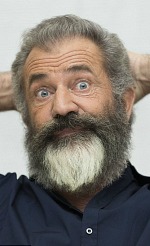
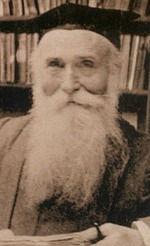
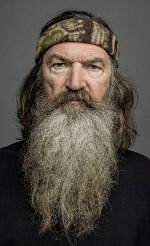
(l. to r.) Hacksaw Ridge director, Madman and the Scholar star Mel Gibson, British lexicographer and Oxford English Dictionary editor James Murray, Duck Dynasty star Phil Robertson.
“It Isn’t Even Past”
50-something years separate these two Warren Beatty photos — the gray-haired version taken last night with Rules Don’t Apply star Lily Collins at the Hollywood Film Awards, and the brown-haired version snapped at either the 1962 or ’63 Oscar awards, which he attended with Natalie Wood. The fact that Beatty plays the famously reclusive Howard Hughes in Rules allows me to mention the late Tony Curtis (who became a Hollywood Elsewhere pally 16 years ago), and how he once told Bill McCuddy that Hughes and John Wayne “wouldn’t like” Brokeback Mountain.
Curtis also told me the following during a chat we had at the Beverly Glen shopping mall in March 2000: “Can I tell you a story, Jeffrey? In 1948, when I was 23 or 24, when I first came out here I lived in a house on Fountain Avenue. I rented a room there. And they had a swimming pool. I had an appointment and I got on a trolley car…they were running right down the middle of the freeway back then. Then I got back, I jumped into the pool, I took a shower, got dressed and got into the car, and drove up here to meet you. That’s how quick these 50-fucking-two years have gone…quick as that.’”

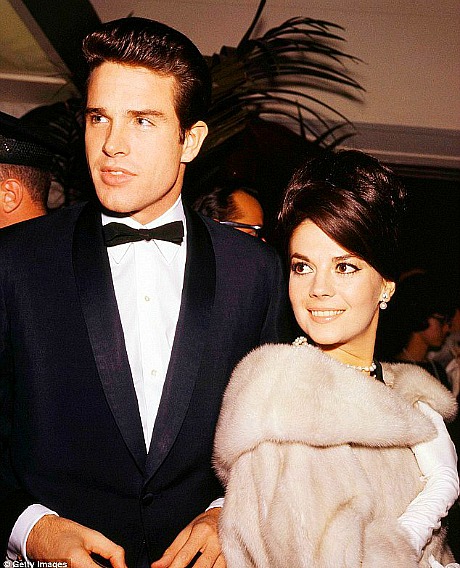
Aimed At Still-Undecided Voters (i.e., Morons)
“Susan Sarandon endorsed Jill Stein. That’s it. That’s the joke.” — spoken last night by James Corden during opening monologue for last night’s Hollywood Film Awards. (Sarandon was in the room, having agreed to present a Best Actress award to Jackie‘s Natalie Portman.) Second best line from HE’s own Jonah Hill as he introduced honoree Leonardo DiCaprio: “As a right-wing Republican, I believe that science is just for pussies and Jews.” — from Mia Galuppo’s Hollywood Reporter story about the Hollywood Film Awards.
Patience Is Beginning To Fray
I’ve been waiting for HBO’s Westworld to shift into a more exacting and aggressive mode. It’s almost starting to feel like a Gordian Knot thing. It’s not that I’m irked by the way it’s been threading and expanding and the way all the layers are accumulating and densifying, which is interesting as far as it goes. And I like that one of the tease threads (of which there are many) is flirting with the idea of Jeffrey Wright‘s Bernard being a host or, better yet, perhaps a “mole” version of Arnold (i.e., the allegedly deceased co-founder and former partner of Anthony Hopkins‘ Ford).
And yes, I respect the hard, herculean effort required to juggle 17 significant characters and give them all interesting things to say and do and shoot back at, and I love the great sets and scenery and whatnot. And I liked the Eyes Wide Shut-like orgy scene from a couple of weeks ago.
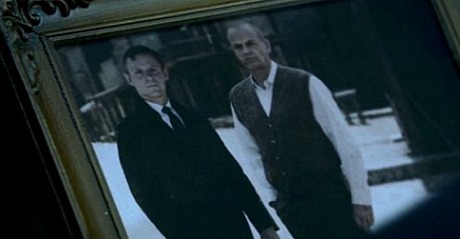
Westworld honcho Ford (Juggernaut-era Anthony Hopkins) and his dead father. Or maybe his deceased partner Arnold. You tell me.
Westworld has definitely been holding my interest. It’s a smart, well-organized effort from a lot of bright, talented people who want to shake the tree and sample exotic fruit. It’s not boring me. Every Sunday night I’ve said to myself, “Okay, great, here we go.”
But over the last couple of episodes (the sixth, “The Adversary”, premiered last night), I’ve been saying “okay, maybe this time something will finally start to happen.” Because so far it’s been all slow-mo buildup and atmospheric layering and tantalizing embroideries and diddly-doo plot wanking. Last night Hopkins and a little-kid droid came upon a dead rotting dog, and I suddenly said to myself, “The fuck? Why am I watching a dead dog?” Something snapped. I was suddenly tired of the bullshit.
I don’t want to even flirt with the idea of all these story lines taking place concurrently. Who gives a shit?
To me, Westworld is feeling more and more like a longform puzzler and head-scratcher for nerds. Intercut, yes, with ultra-violent, Wild Bunch-like shoot-outs and occasional nudity moments (not just Thandie Newton, Evan Rachel Wood and James Marsden but sagging grizzly guys with thimble-sized dicks) in the lab, but essentially it’s a puzzle maze for gamers and dweebs.
The fact that David Chen does a weekly Slashfilm podcast called “Decoding Westworld” tells you everything.
